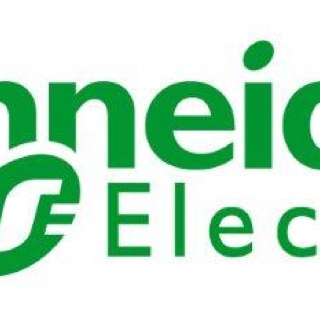Information
-
Safety and Regulatory Compliance Department Internal Audit Report
-
Location Code:
-
Inspection Date:
-
Auditor:
- Ellen Dolinar
- Brent Grandidier
- Brandon Keeling
- Russell Parks
- Max Vernon
-
Debriefed (Name and Title):
-
Response Due By:
EPA Binder
-
Select Site's Classification:
-
ID Number: Expiration Date:
-
Is a copy of the Site's EPA Waste Permit/Number in the EPA Binder?<br>40 CFR 262.12(a)
-
Site's Waste Records (and associated documents) contain Hazardous Waste, Universal Waste, Used Oil, Non-Hazardous Manifests, and/or Bills-Of-Lading... as applicable?
-
Site's Waste Records (and associated documents) contain External Audits, Inspections, and/or Correspondence?
-
Confirm that Weekly Inspections of Waste Storage Areas are being performed, logged, and affectively conducted?<br>40 CFR 265.174
Training
-
Site has a current Environmental Coordinator (EC)?
-
Employee Name: Training Date:
-
Most current EC training records/certificates are on file in EPA Binder and are retrievable for 36 Months?<br>40 CFR 265.16(e)
Hazardous Waste Manifest
-
Return To Generator Hazardous Waste Manifests are reconciled within the Time Limit (within 60 days of Shipment Date)?<br>List finding(s) in details.<br>40 CFR 262.42
-
Site only uses DOT or EPA Certified personnel to sign as Generator Offerer?<br>49 CFR 172.205 and 40 CFR 262.34(d)(5)
-
Hazardous Waste Manifests are maintained, with a minimum of 36 Rolling Months being immediately available?<br>40 CFR 262.40(a)
-
Confirm that Site uses a Permitted Hazardous Waste Transporter (and) a Permitted Treatment, Storage, and Disposal Facility (TSDF)?<br>40 CFR 262.12(c)<br>List Transporter and TSDF in details.
Emergency Preparedness
-
Either Landlines or Cell Phones are available, at or near the Scene of Waste Operations?<br>40 CFR 265.34(b)
-
Republic Safety Hotline is posted, at or near the Scene of Waste Operations?
-
Local Emergency Information is posted, at or near the Scene of Waste Operations?<br>40 CFR 262.34(d)(5)(ii)
-
MSDS Information (Posters or Stickers) is posted, at or near the Scene of Waste Operations?<br>1910.1200(g)(8)
-
A No Smoking Sign is posted, at or near the Scene of Waste Operations?
-
Fire Extinguishing Equipment is located, at or near the Scene of Waste Operations (~ 50 feet max)?<br>40 CFR 265.32(c) & 29 CFR 1910.157(d)(4)
-
Spill Clean-up Kits and/or Materials are provided, at or near the Scene of Waste Operations?<br>29 CFR 1910.106(e)(2)(iv)(b)
Hazardous Waste Management
-
Used and/or Contaminated Flammable Paints and Flammable Solvents (MEK, Isopropyl Alcohol, Acetone), are managed as Hazardous Waste?<br>40 CFR 261.3
-
Spill Clean-up Materials (Pigs, Absorbant, Mats, Rags, etc) contaminated with Flammable Paints and Flammable Solvents (MEK, Isopropyl Alcohol, Acetone), are managed as Hazardous Waste?<br>40 CFR 261.3
-
Rags contaminated with Flammable Solvents are managed as:
- Recycled
- Laundered
- Hazardous Waste
- Red Rag Container
-
Spent and/or Fired O2 Generators are managed as Hazardous Waste?<br>40 CFR 261.3
-
"Broken" Fluorescent Lamps and Residue are managed as Hazardous Waste?
-
Used, Spent, Empty Aerosol Cans (Flammables and/or Corrosives) are managed as Hazardous Waste [40 CFR 261.7(b)(2)] or are properly purged via an Aerosol Can Puncture Unit?
-
Aerosol Cans are managed as:
Expired "Regulated" Material
-
Expired "Regulated" Material is managed as Hazardous Waste?<br>40 CFR 261.33
-
Expired "Regulated" Material (Hazardous Waste) is moved immediately to the appropriate Hazardous Waste Container (no intermediate staging)?
Fluorescent Lamps - Universal Waste Management
-
Are Used, "Intact/Unbroken" Fluorescent Lamps generated at this Site?
-
Fluorescent Lamp Area
Area
-
Accumulation Area Designation:
-
Fluorescent Lamp Universal Waste Accumulation Area is managed and placarded as Universal Waste?<br>40 CFR 273.13(d)
-
Fluorescent Lamp Universal Waste Accumulation Containers are labeled Universal Waste Lamps, Waste Lamps, or Used Lamps?<br>40 CFR 273.14(e)
-
Fluorescent Lamp Universal Waste Accumulation Containers are Closed and Secured?<br>40 CFR 265.171
-
Fluorescent Lamp Universal Waste Accumulation Containers have been Dated when the first UW was placed into the Container?<br>40 CFR 273.15(c)
-
No Containers of Universal Waste have been on-site for more than 365 Days?<br>40 CFR 273.15(b)
-
There are no Broken Lamps in the Universal Waste Container.
Batteries - Universal Waste Management
-
Are Used Lead-Acid Batteries, Ni-Cad Batteries, or Lithium Batteries generated at this Site?
-
Battery Accumulation Area
Area
-
Accumulation Area Designation:
-
Accumulation Area for Universal Waste Batteries are managed and placarded as Universal Waste?<br>40 CFR 273.13(a)
-
Accumulation Containers for Universal Waste Batteries are labeled Universal Waste Battery(ies), Waste Battery(ies), or Used Battery(ies)?<br>40 CFR 273.14(a)
-
Accumulation Containers for Universal Waste Batteries are Closed?<br>40 CFR 264.173(a)
-
Accumulation Containers for Universal Waste Batteries have been Dated when the First UW was placed into the Container?<br>40 CFR 273.15(c)
-
Accumulation Containers for Universal Waste Batteries have been on-site for less than 365 Days?<br>40 CFR 273.15(b)
Mercury - Universal Waste Management
-
Are Mercury Containing Equipment (Switches/Thermostats/Devices) generated at this Site?<br>
-
Mercury Accumulation Area
Area
-
Accumulation Area Designation:
-
Mercury Containing Equipment (Switches/Thermostats/Devices) are managed and area is placarded as Universal Waste?<br>40 CFR 273.13(c)
-
Accumulation Containers for Mercury Containing Equipment (Switches/Thermostats/Devices) are marked Universal Waste Mercury Containing Equipment, Waste Mercury Containing Equipment, or Used Mercury Containing Equipment?<br>40 CFR 273.14(d)
-
Accumulation Containers for Mercury Containing Equipment (Switches/Thermostats/Devices) have been Dated when the First UW was placed into the Container?<br>40 CFR 273.15(c)
-
Accumulation Containers for Mercury Containing Equipment (Switches/Thermostats/Devices) have been on-site for less than 365 Days?<br>40 CFR 273.15(b)
Hazardous Waste Container / Area Management
-
Is there a Hazardous Waste Accumulation Area at this Site?
-
Hazardous Waste Accumulation Area
Area
-
Type of Accumulation Area: Accumulation Area Designation:
-
Hazardous Waste Accumulation Area is Placarded as such?<br>SAFE 3.5.8
-
Hazardous Waste Accumulation Area is Free of Spills and/or Leaks?<br>40 CFR 265.174
-
All Accumulation Containers for "Liquid" Hazardous Waste have Secondary Containment, which are free of excessive liquids?<br>40 CFR 264.175
-
All Accumulation Containers for Hazardous Waste are Closed & Secured?<br>40 CFR 264.173
-
All Accumulation Containers for Hazardous Waste are in good condition (40 CFR 265.171) and compatible with the contents (40 CFR 265.172)?
-
All Accumulation Containers are legibly Labeled with contents identified?
-
All Accumulation Containers for Hazardous Waste are Labeled or Marked as Hazardous Waste [40 CFR 262.34(a)(3)] and have the appropriate Hazard Classification Label on the Container?
-
All Accumulation Containers for Hazardous Waste are Dated (CAA - 180 Day Area) or Not Dated (SAA)?<br>40 CFR 262.34(c)(2)
-
Total quantity of Hazardous Waste in any one Satellite Accumulation Area is < 55 Gallons?<br>40 CFR 262.34(c)(1)
-
Are all Waste Containers properly separated by Type (Hazardous, Universal, Used Oil), so that they are not encroaching into another Waste Area? <br>40 CFR 265.177(c)
-
Exterior Hazardous Waste Storage Areas are protected from the weather?<br>SAFE 3
Oil Management
-
Is Oil "Consumed and/or Dispensed" at this Site?
-
Empty Oil Containers are Satisfactorily Drained before Disposal?
-
Empty Oil Containers are Recycled or Trashed?
-
Is "Used Oil" generated and managed as "Used Oil" at this Site?
-
Used Oil Area
Area
-
Accumulation Area Designation:
-
Accumuation Area for Used Oil is placarded as Used Oil?
-
Accumulation Containers for Used Oil are marked as "Used Oil"?<br>40 CFR 279.22(c)
-
Accumulation Containers for Used Oil have Secondary Containment?<br>40 CFR 264.175
-
Accumulation Containers for Used Oil, with Lids/Caps/Funnels are DOT certified and Closed?<br>40 CFR 279.22
-
Accumulation Containers for Used Oil are separated from Oxidizers by 20 feet, or an appropriate barrier? <br>49 CFR 177.848
-
Are "Used Oil Filters" generated at this Site?
-
Used Oil Filter Containment
Container
-
Used Oil Filter Accumulation Containers are marked as "Used Oil Filters"?<br>40 CFR 279.22(c)
-
Used Oil Filters are appropriately "Hot Drained", prior to placing in the Accumulation Container?<br>40 CFR 261.4(b)(13)
-
Accumulation Containers for Used Oil Filters have Secondary Containment?<br>40 CFR 264.175
-
Exterior Used Oil Storage Areas are protected from the weather?<br>SAFE 3
Fuel Management
-
Is Waste Fuel generated at this Site?
-
Waste Fuel is picked up/blended with Used Oil?
-
Waste Fuel is picked up as Hazardous Waste?
Aircraft Drinking Water Rule
-
Is there a Potable Water Cabinet or Station?
-
Potable Water Cabinet
Cabinet
-
Area Designation and Cabinet Identifier:
-
Potable Water Cabinet / Station Doors are Closed, and No Unrelated Material on Top?
-
Potable Water Cabinet / Station Interior is Clean, with no Excessive Leaks?
-
Potable Water Cabinet / Station Hose is Secured to Post on inside (or) has Cap to Prevent Contamination.
-
Is there an AWOCS Unit?
-
AWOCS Unit
Unit
-
Area Designation and Unit Identifier:
-
Unit is Clean, with Connection Ports either Capped or Otherwise Protected?
-
If Unit has Pre-Filter, has it been Changed within the last 365 Days?
Miscellaneous
-
Is there a Room/Cabinet/Other Area, utilized at the Ramp?
-
Review Area and note all details, which might inlcude Findings.
-
Are there Outside Areas (Bone Yard) that need to be reviewed?
-
Review Outside Areas and note all details, which might include Findings.
-
General Observations:











